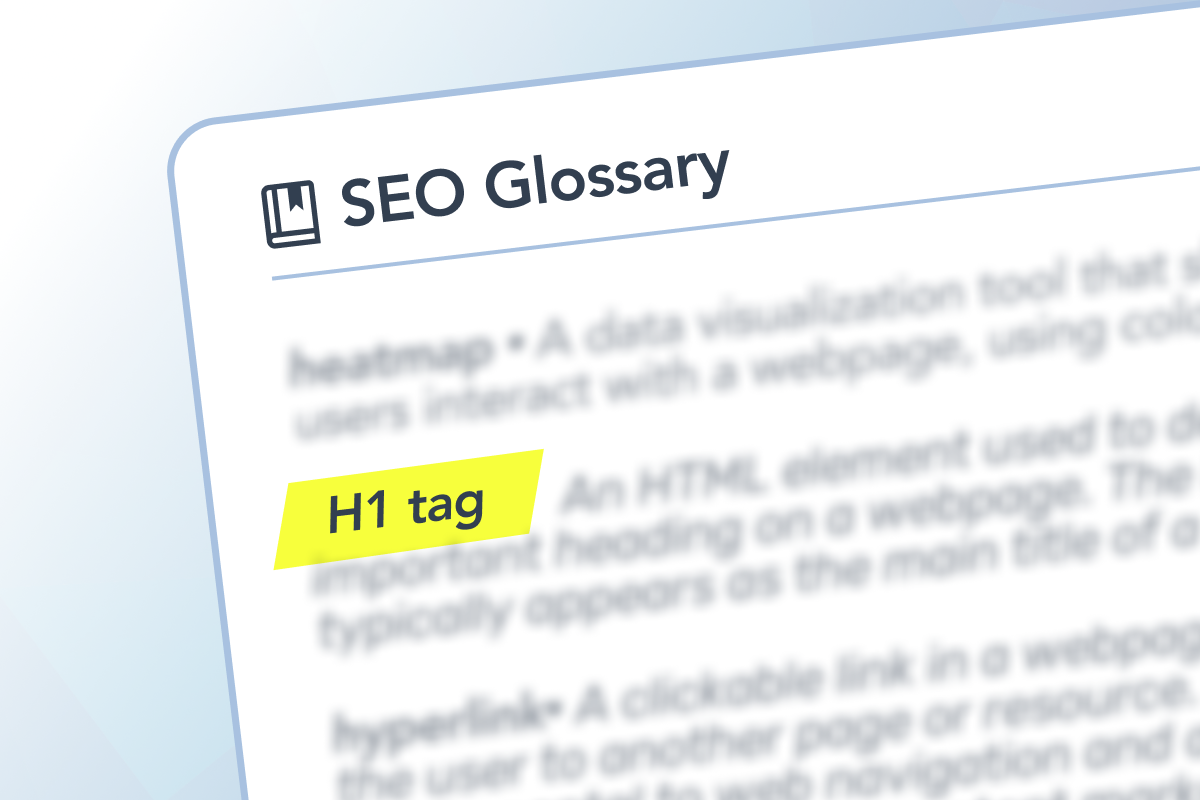What are H1 tags?
Imagine you’re reading a book, and the chapters don’t have titles. It would be difficult to know what the chapters are about or where to find specific information. H1 tags are like chapter titles for your website, providing clear direction to both visitors and search engines. They help organize your content and make your pages easier to read and navigate.
What are H1 tags in SEO?
An H1 tag is an HTML (Hypertext Markup Language) element that specifies the primary heading of a webpage. Think of it as the headline that introduces your content and summarizes what your page is all about. Search engines often assign higher weight to headings because they’re typically designed to summarize content. An optimized H1 can positively impact a page’s ranking for its relevant terms.
Why are H1 tags important for SEO?
Like signposts on a long journey, H1 tags guide search engines and visitors toward relevant and valuable content. Here’s how they play a key role in SEO:
- Keyword relevance: Search engines use keywords in H1 tags to understand the central topic of the page. Including relevant keywords here helps search engines match your content with users’ search queries.
- Content structure: H1 tags establish the framework of your content, guiding readers through the information in a logical way. This organized structure keeps visitors engaged and reduces bounce rates.
- User experience: Visitors quickly understand what your page is about, leading to a smoother browsing experience. A well-written H1 grabs their attention and encourages them to explore the rest of your content.
How to use H1 tags effectively:
To harness the power of H1 tags, consider these best practices:
- Use one H1 per page: Stick to one H1 tag per page to avoid confusing search engines and visitors. Reserve it for your page’s main topic.
- Include relevant keywords: Choose a keyword that matches your page’s primary topic, but ensure the heading remains natural and engaging.
- Make it unique: Avoid using generic headings like “Welcome” or “Home.” Instead, craft a distinctive H1 tag that reflects the unique content of each page.
- Keep it concise: An H1 tag should be a brief summary of your page’s main point. Aim for clarity and relevance.
- Ensure consistency: Make sure your H1 aligns with other headings (H2, H3, etc.) to create a logical flow that readers can easily follow.
H1 tags are simple but powerful pieces of code that can significantly impact your website’s SEO performance and user experience. By creating a single, keyword-rich, and descriptive H1 tag for each page, you’re setting the stage for search engines to understand your content and guide visitors toward the right information. A well-crafted H1 tag is like the bold title of an intriguing book chapter—it hooks readers in and leads them on a journey through your digital content.


